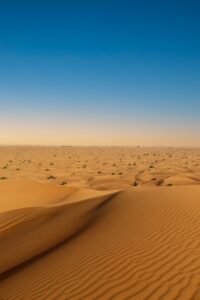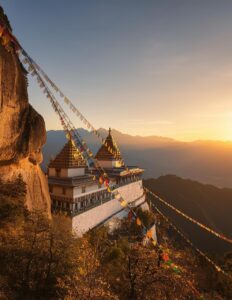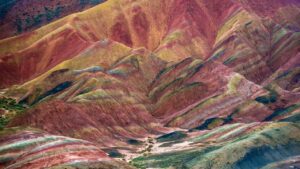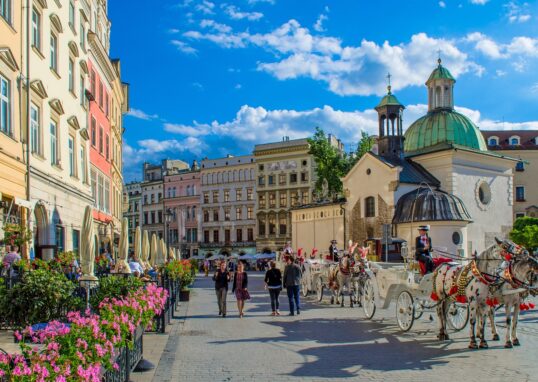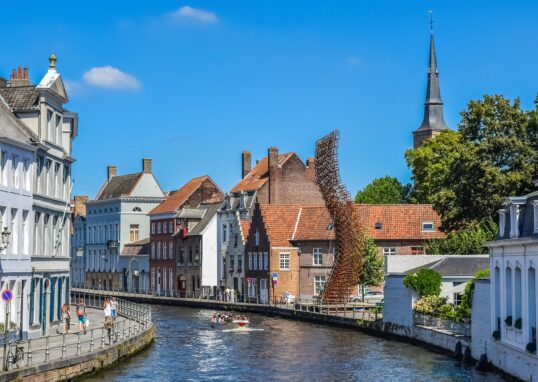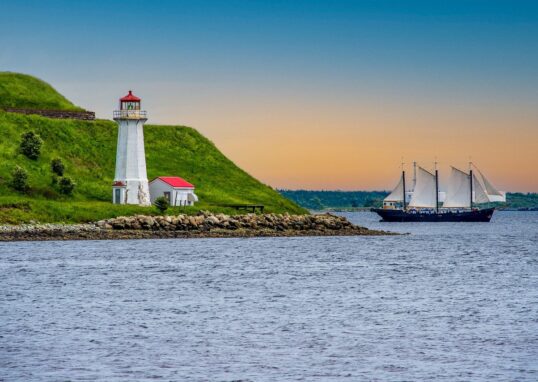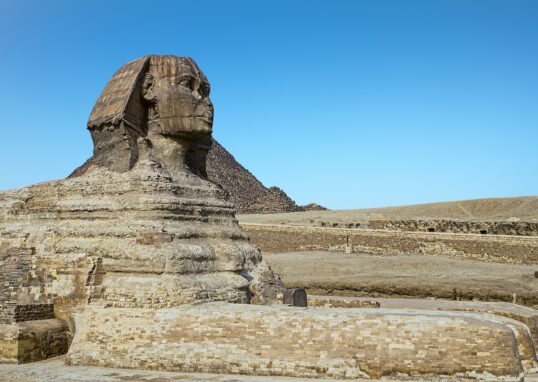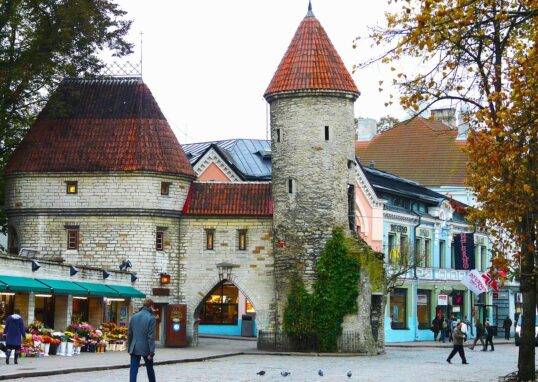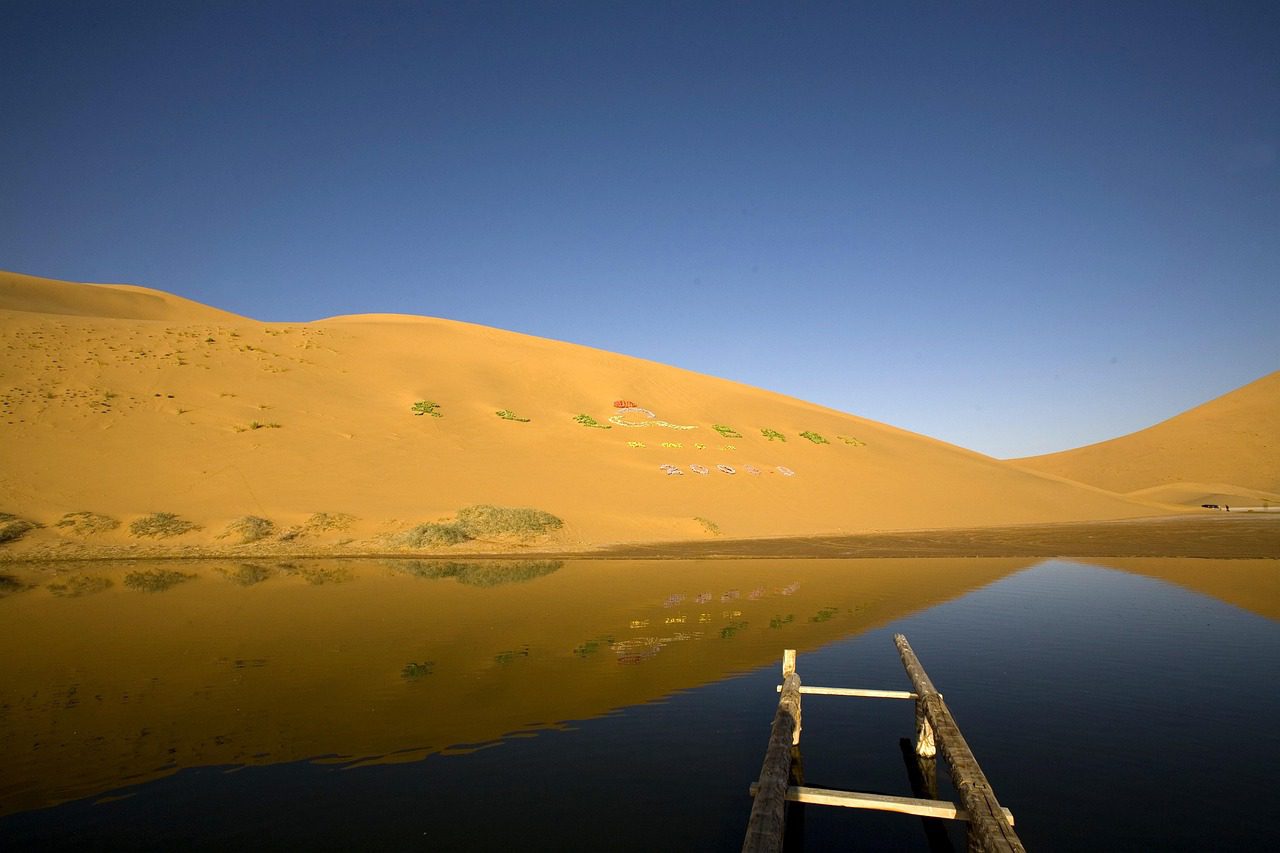
The Badain Jaran Desert: The Desert of Singing Sand Dunes and Hidden Lakes
The Badain Jaran Desert is an extremely enigmatic and beautiful desert on earth. It is located in western Inner Mongolia, China. The Badain Jaran Desert is lesser known than the Sahara or the Gobi, but it has a sort of beauty. Tourists who visit here are amazed at its size, silence, and hidden beauty. The Badain Jaran Desert also is known as the singing sand dunes desert and the thousands of lakes. It is different from other deserts in the sense that it has both high sand dunes and sparkling lakes. Such a combination is special and unique. We will be covering the desert heavily in this long article. We will be covering its geography, climate, history, people, animals, attractions, and surrounding places.
Geography of the Badain Jaran Desert
The Badain Jaran Desert has an area of about 49,000 square kilometers. It is thus the third largest desert in China. It crosses three provinces: Inner Mongolia, Gansu, and Ningxia. The desert is famous for its huge sand dunes. Some of them are the tallest in the world. One is 500 meters high, taller than the Empire State Building in New York. The dunes shine like golden mountains in the sun. There are more than 140 lakes among the sand dunes. All of them are not either fresh water or salt water. All the lakes receive underground water. The lakes create an oasis-like environment in which flora and fauna can live. Dry valleys, open plains, and rocky outcrops also exist in the desert. The presence of all these landscapes makes it extremely diverse.
Climate of the Badain Jaran Desert
Weather is arid and extreme in this region. It rains very seldom. Less than 40 millimeters of rainfall falls on the desert every year on average.
- Summer: Very hot by day. Temperatures frequently rise more than 40°C (104°F).
- Winter: Very cold. The temperature falls below –20°C (–4°F) by night.
- Difference Between Day and Night: The temperature can vary by over 20 degrees between day and night.
Because of these conditions, it is hard to live in the desert. But the lakes and ground water make it possible to live here for plants and human beings.
Unique Features of the Desert
Badain Jaran Desert has several unique features which make it different.
Singing Sand Dunes
The dunes here make sounds as the sand runs downwards. The sound is like a drumbeat or a yelling voice. It happens due to the movement of millions of grains of sand. This is why the desert is also called the desert of “singing dunes.”
The Lakes
Most surprising of all is the lakes. There are more than 140 lakes scattered across the desert. They are very small and gigantic. Some have salt crystals lining their shores, but others are freshwater lakes filled with reeds and fish.
Highest Sand Dunes in the World
The Badain Jaran has some of the world’s highest sand dunes. The Bilutu Dune, a name well known in homes, stands around 500 meters high. It is extremely difficult to climb to the summit, but the panorama is great.
Oases and Villages
There are small villages in the desert, such as Badain Jaran Village. People live in the regions near the lakes, feed animals, and cultivate a little crop. The villages look like green pearls in the center of boundless sand.
History of the Desert
The Badain Jaran Desert is ancient. It was along ancient Silk Road routes once. Merchants and travelers traversed it along the way between China and Central Asia.
Local legends
say the lakes are sacred. The desert is protected by spirits, according to some individuals. The sounds during singing dunes were gods’ voices. There had been nomad tribes that lived in the area through history. They traveled with goats, sheep, and camels. You can still see Mongolian yurts (tents) even today.
People of the Badain Jaran Desert
The people are mostly ethnic Mongols. They lead the desert lifestyle. They live in villages along the lakes. Their dwellings are not sophisticated. Some of them even live in yurts like they used to. They raise camels, sheep, and goats. The camels are very valuable. They provide milk, wool, and act as modes of transportation. Other people also cultivate crops along the lakes, where there is water. Hospitality is a major cultural feature. Guests are typically welcomed with tea, bread, and camel rides in some cases.
Wildlife in the Desert
Despite the desert appearing barren, it is actually home to inhabitants. The lakes and ground water support flora and fauna.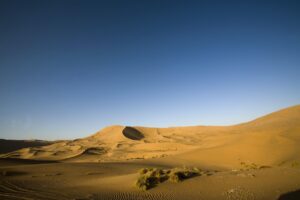
- Plants: Tamarisk trees, reeds, and desert bushes flourish around the lakes.
- Animals: Wild camels, rabbits, foxes, and lizards call the area home. Ducks and geese migrate to the lakes.
- Insects: Beetles and ants can survive in the sand. The rare Bactrian camel, a two-humped camel with great strength, can be found in the desert.
Tourist Attractions in the Desert
Badain Jaran Desert is an emerging tourist spot. People visit to view its peculiar landscapes.
Bilutu Sand Dune
The highest sand dune in the desert. Climbing it is not easy, but from the top one can have a view of infinite dunes and secret lakes.
Badain Lake
One of the largest and most stunning lakes. It is surrounded by sand dunes, creating a stunning scenery.
Yinderitu Lake
A freshwater lake filled with plants and overgrown with reeds. Birds usually group around here.
Badain Jaran Temple
A tiny Tibetan Buddhist temple built near one of the lakes. It is more than 200 years old. It is astounding to see a temple in the desert.
Camel Trekking
Tourists can ride camels across the dunes. It gives them a real desert experience.
Jeep Tours
Four-wheel drive jeeps take tourists across the dunes. It is thrilling and gives access to hidden locations.
Photography
The desert is paradise for photographers. Sunrise and sunset make sand golden and red. Blue lakes against yellow dunes in an enchanting manner.
Surrounding Places of the Badain Jaran Desert
The Badain Jaran Desert is one of the most fascinating deserts in the world. It is located in west Inner Mongolia, China. The desert is renowned for its towering sand dunes, mysterious lakes, and strange landscapes. While the center of this desert is lovely, that is not all. The areas around the Badain Jaran Desert are filled with many treasures as well. These surrounding places are mountains, lakes, cultural grounds, old cities, and modern cities. All of them constitute an entire travel experience. We will discuss surrounding places in detail in this article. Each section will cover natural places, cultural places, surrounding towns, and one-of-a-kind experiences that visitors can enjoy.
Zhangye Danxia National Geological Park
South-southeast of the Badain Jaran Desert is the Zhangye Danxia National Geological Park. This is in Gansu Province. It is renowned for rainbow-colored mountains. The rocks were colored millions of years ago as a result of the accumulation of minerals and sandstone. Walking at Zhangye Danxia is like walking on an enormous piece of painting. The hills display colors of red, orange, yellow, and green. Dawn and dusk are the ideal times to go. At these times, the sunlight highlights the colors even more vividly. Zhangye Danxia is both unique and beautiful. It has been designated a UNESCO World Heritage Site. Tourists usually visit this park along with their desert tour. Combined, the golden dunes of Badain Jaran and Zhangye’s rainbow mountains form a breathtaking contrast.
Alxa League (Alashan)
Badain Jaran Desert lies in the Alxa League of Inner Mongolia. Alxa is a vast desert with mountains and lakes. Alxa is visited by travelers who view Mongolian life, nomad culture, and camel caravans. Small desert towns exist in Alxa too. They are peaceful but with a particular beauty. These towns provide food, accommodation, and the possibility of witnessing the daily routine of residents to travelers. The Alxa Left Banner and Alxa Right Banner are two major divisions of this location. Both divisions contain natural points of interest and cultural points of interest. The Alxan people are welcoming and warm. The majority of them still preserve their traditional lifestyle. They have camels, goats, and sheep. They also observe Mongolian holidays with horse riding, music, and dance.
Qilian Mountains
South of the desert lie the towering Qilian Mountains. They are anatural boundary between Inner Mongolia and Qinghai. The mountains are snow-capped, high, and densely forested. The mountains stand in dramatic contrast to the dry, golden sand dunes of the desert. Rivers, glaciers, and grasslands are found in the Qilian Mountains. The valleys are blanketed with flowers in the summer. Yaks and sheep flocks graze in the meadows. The mountains also provide water supply to the lakes in the Badain Jaran Desert. For travelers, climbing, camping, and photographing in the Qilian Mountains are provided. With the desert and mountain found in one trip, the location is exceptional.
Dunhuang and the Mogao Caves
Adjacent to the Badain Jaran Desert is the historical city of Dunhuang in Gansu Province. Dunhuang was once a crucial place along the Silk Road. It connected China to Central Asia, the Middle East, and Europe. The most visited site in Dunhuang is the Mogao Caves. The caves are adorned with Buddhist sculptures, paintings, and murals. The caves stretch across more than 1,500 years. The caves are a representation of the rich history of cultural exchange in the Silk Road. Dunhuang is where tourists are exposed to the other face of life in the desert. It is art, history, and spirituality all in one. Other places of interest within the city include the Crescent Lake and the Echoing Sand Dunes. These are nature places that add to the mystique of the place.
Jiuquan City
To the east of the desert lies Jiuquan City in Gansu Province. Jiuquan is famous for its role in China’s space exploration. The close vicinity contains the Jiuquan Satellite Launch Center. This is where China launches most of its space missions. But rockets are not the sole attractions of Jiuquan. The city also has cultural landmarks. There are temples, ancient towers, and traditional markets that visitors can tour. It serves as a gateway to the contemporary world for travelers traveling to the Badain Jaran Desert.
Ejina Banner and Poplar Forests
To the northwest of the Badain Jaran Desert, in Inner Mongolia once more, is Ejina Banner, famous for its stands of Populus Euphratica. These are ancient poplars that turn golden yellow in the autumn. Ejina Poplar Forest is one of China’s most beautiful places during autumn. Individuals come in from far and wide to see the golden leaves. The trees thrive in tough desert weather, which makes them even more special. In addition to trees, Ejina also has rivers, marshes, and wildlife. Birds migrate, so it is an ornithologist’s paradise. There is an Ejina Poplar Festival in October to commemorate nature’s splendor.
Yumen Pass and Jade Gate
Close to Dunhuang, tourists can go to the Yumen Pass, or Jade Gate Pass. It was once a significant site along the old Silk Road. Jade, silk, and spices were carried by caravans through this gate. Today, Yumen Pass is a historic ruin. Its towers and walls stand tall as a testament to the days of glory of the Silk Road. The location gives visitors a sense of how trade and travel brought the East and the West together.
The Hexi Corridor
Hexi Corridor is a tortuous and narrow strip of land extending from the north to the south in the Province of Gansu. It connects the Chinese interior with the west. It has been the center of the Silk Road for centuries. The pass passes through many cities, including Zhangye, Jiuquan, Jiayuguan, and Dunhuang. Each of these cities possesses its own ancient sites, temples, and fortresses. The Hexi Corridor is also full of natural beauty, including rivers, mountains, and deserts. Travel along the Hexi Corridor is traveling back in time. You can envision the merchants, pilgrims, and caravans that once passed through the route.
Jiayuguan Pass
The second major site near the Badain Jaran Desert is the Jiayuguan Pass. This is the west terminus of the Great Wall of China. This is an enormous fortress built during the Ming Dynasty. The Jiayuguan Pass was a strategic defense position. It protected China against western invasions. Today, the fortress remains intact and receives many tourists. You can see the desert and mountains on the horizon from its walls. The place also has museums and exhibits. These allow tourists to learn about the history of the Great Wall as well as the Silk Road.
Inner Mongolian Grasslands
While the Badain Jaran Desert is sandy and dry, not far away is the Inner Mongolian grassland. The grassland stretches mile after mile, green during summer. It is home to nomadic herders and animals. Visitors to the grasslands can stay in traditional yurts. They can also taste Mongolian food, songs, and horse-riding. The grassland presents a peaceful contrast to the desert’s rugged conditions.
Qinghai Province
South of the Badain Jaran Desert lies Qinghai Province. Qinghai Province is renowned for its high-altitude landscape. It has mountains, lakes, and open areas. The most famous site in Qinghai is Qinghai Lake. It is China’s largest salt lake. It is a picturesque spot with blue water and grasslands on its periphery. Resting migratory birds visit Qinghai Lake, a nature lover’s haven. Qinghai also has Tibetan culture. Guests can see monasteries, prayer flags, and festivals. The mix of Tibetan and Chinese culture is what differentiates the province.
Cultural and Trade Routes
There are a variety of ancient trade routes that encircle the Badain Jaran Desert. These were part of the network of the Silk Road. Traders traversed the desert with products like silk, spices, and jade. Along these highways, there appeared towns and stopping places. They are in some cases ruins today but retain the tales of those visitors in times past. To visit there gives one a sense of how important that place was in the past. The Badain Jaran Desert is surrounded by a few of China’s most beautiful and oldest places. From the rainbow-hued mountains in Zhangye to the holy caves in Dunhuang, from the golden poplar forests in Ejina to the mighty Qilian Mountains, the region offers endless discovery. Each location surrounding adds a new dimension of experience. Some highlight nature’s beauty. Others expose history or old trade. Together, they add an experience that is at once adventurous and meaningful. The Badain Jaran Desert is not all about sand dunes and lakes. It is also a gateway to a wider world with history, culture, and nature. Going around the locations makes travel richer and unforgettable.
Importance of the Badain Jaran Desert
Badain Jaran Desert is important for several reasons:
- Natural Beauty: Its unique combination of lakes and dunes is rare in the world.
- Culture: It preserves Mongolian culture and lifestyle.
- History: It is associated with the Silk Road.
- Science: Scientists study its dunes, groundwater, and ecosystems.
- Tourism: It attracts adventurers, photographers, and nature lovers.
Conclusion
The Badain Jaran Desert is a magical region. It has the tallest sand dunes, eerie singing sounds, and hidden lakes. It is beautiful as well as cruel at the same time. Tourists who visit there get the strength of nature and the silence of the desert. They see how people and animals survive in this tough soil. The desert is not simply sand. It is a living place with history, culture, and even beauty. Surrounded by land like rainbow mountains, Buddhist caves, and grasslands, the Badain Jaran Desert is definitely one of the most unusual places on earth.

